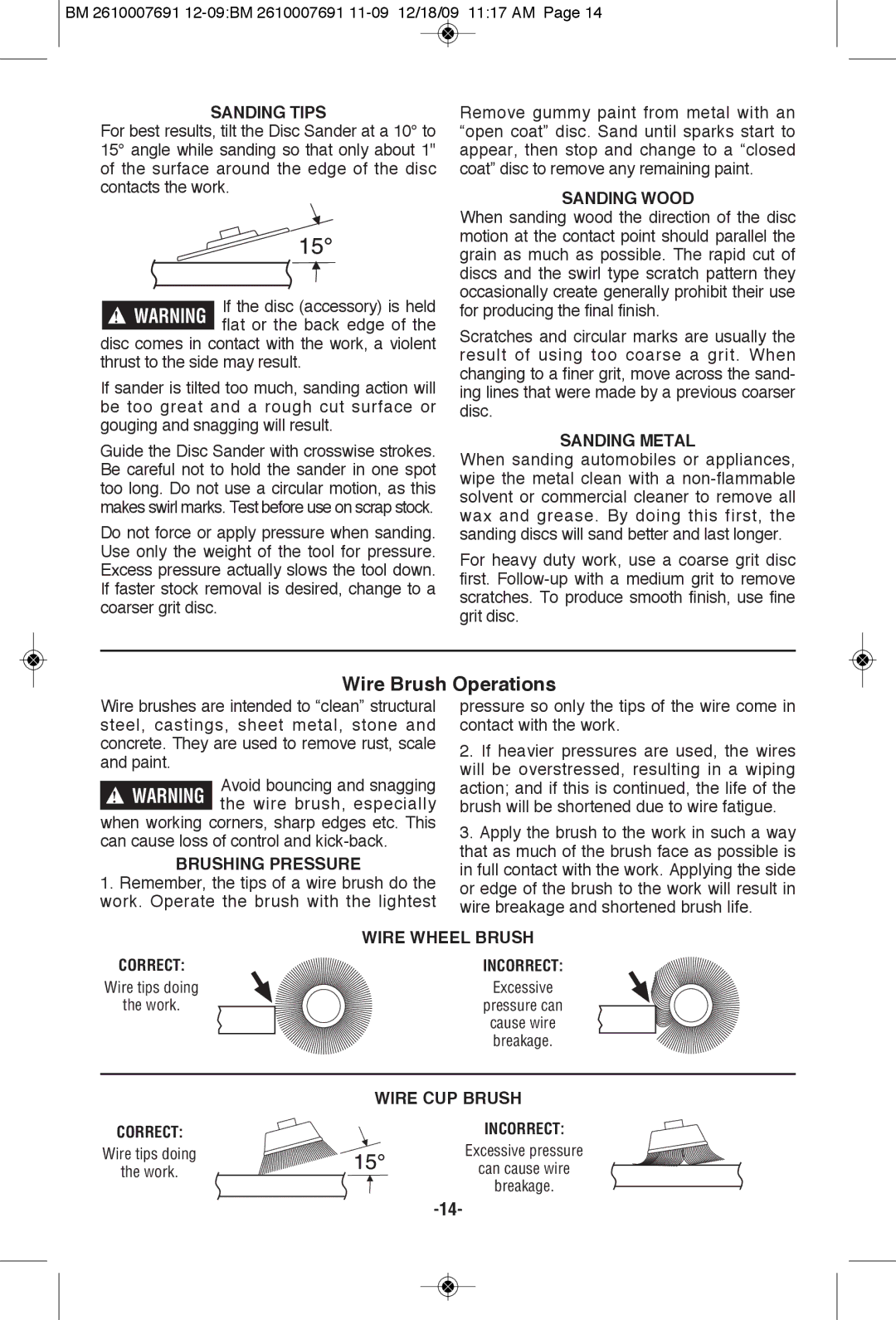
BM 2610007691 12-09:BM 2610007691 11-09 12/18/09 11:17 AM Page 14
SANDING TIPS
For best results, tilt the Disc Sander at a 10° to 15° angle while sanding so that only about 1" of the surface around the edge of the disc contacts the work.
If the disc (accessory) is held ! WARNING flat or the back edge of the
disc comes in contact with the work, a violent thrust to the side may result.
If sander is tilted too much, sanding action will be too great and a rough cut surface or gouging and snagging will result.
Guide the Disc Sander with crosswise strokes. Be careful not to hold the sander in one spot too long. Do not use a circular motion, as this makes swirl marks. Test before use on scrap stock.
Do not force or apply pressure when sanding. Use only the weight of the tool for pressure. Excess pressure actually slows the tool down. If faster stock removal is desired, change to a coarser grit disc.
Remove gummy paint from metal with an “open coat” disc. Sand until sparks start to appear, then stop and change to a “closed coat” disc to remove any remaining paint.
SANDING WOOD
When sanding wood the direction of the disc motion at the contact point should parallel the grain as much as possible. The rapid cut of discs and the swirl type scratch pattern they occasionally create generally prohibit their use for producing the final finish.
Scratches and circular marks are usually the result of using too coarse a grit. When changing to a finer grit, move across the sand- ing lines that were made by a previous coarser disc.
SANDING METAL
When sanding automobiles or appliances, wipe the metal clean with a
For heavy duty work, use a coarse grit disc first.
Wire Brush Operations
Wire brushes are intended to “clean” structural steel, castings, sheet metal, stone and concrete. They are used to remove rust, scale and paint.
Avoid bouncing and snagging ! WARNING the wire brush, especially
when working corners, sharp edges etc. This can cause loss of control and
BRUSHING PRESSURE
1.Remember, the tips of a wire brush do the work. Operate the brush with the lightest
pressure so only the tips of the wire come in contact with the work.
2.If heavier pressures are used, the wires will be overstressed, resulting in a wiping action; and if this is continued, the life of the brush will be shortened due to wire fatigue.
3.Apply the brush to the work in such a way that as much of the brush face as possible is in full contact with the work. Applying the side or edge of the brush to the work will result in wire breakage and shortened brush life.
CORRECT:
Wire tips doing
the work.
WIRE WHEEL BRUSH
INCORRECT:
Excessive
pressure can
cause wire breakage.
WIRE CUP BRUSH
CORRECT:INCORRECT:
Wire tips doing | Excessive pressure |
the work. | can cause wire |
| breakage. |
